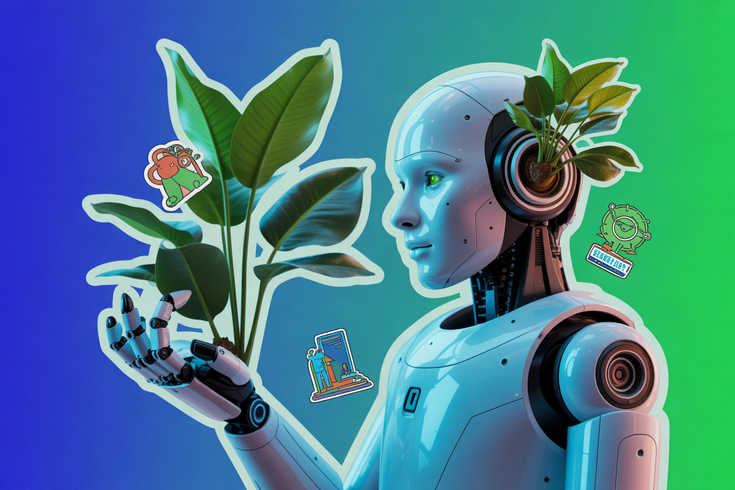Sustainability Meets AI: How Businesses Are Driving Green Innovation in 2025
By Brandon StrazaAI isn't just a buzzword; it's the backbone of today's sustainability movement. Businesses integrating AI technology are transforming environmental responsibility into economic advantage, tapping into the rapidly growing market of conscious consumers willing to pay more for green products.
Fast-track your sustainability game in three steps: 1) Leverage AI-driven supply chain optimization software, 2) Implement AI-powered energy management systems, 3) Adopt machine learning algorithms to predict and reduce resource wastage.
The pressure to innovate isn’t external—it's coming from your customers. They're already demanding ethical products, and companies embracing AI for sustainability see the lion's share of this new market. Yet, fear of change and investment anxiety are holding many back.
How to Leverage AI for Sustainable Business Transformation
Adopting AI for sustainability isn’t optional—it’s imperative. Directly, AI enables precise targeting of inefficiencies, drastically reducing waste and cost. Tools like predictive analytics and automation platforms streamline operations and sustainably scale output.
- AI identifies waste hotspots down to the micro-level, letting you fix problems before they add up.
- Automation in inventory management cuts unnecessary stock-piling and resource use.
- Move from spreadsheet-induced paralysis to AI-driven agility. Use AI not just to optimize, but to predict and innovate. Feel uncomfortable yet?
The Real Reason You're Not Meeting Sustainability Goals
Let's be blunt—a lot of businesses claim to prioritize sustainability but drag their feet when it comes to real change. The answer? Fear and complacency. AI, when used right, obliterates these excuses. It's not about claiming green credentials; it's about being worth them. The uncomfortable truth is while you hesitate, others are leapfrogging to the forefront with AI.
- 87% of consumers prefer sustainable products, but only 33% of businesses truly align with green principles.
- Start where the impact is immediate: energy consumption. AI solutions slash costs, reduce footprint, and yes, keep you competitive.
- Value comes not from ideation but implementation. So, what's it gonna be?
What Are Consumers Really Looking For in Green Products?
Sustainability is lucrative, not a charitable initiative. Consumers are out here waving their money around for bona fide green goods. They want transparency and genuine efforts, not marketing spin. Products backed by AI-driven sustainability measures meet this need head-on.
- 67% are willing to pay more if it means greener products.
- AI-driven insights do more than guide—they convert.Consumer demand isn't a forecast; it's a fact.
- Compromise is costly. You either evolve now or risk irrelevance.
AI vs. Traditional Sustainability Methods: Which Wins?
Here's what you're probably afraid to hear: traditional approaches are old news. If you're clinging to them, you're already obsolete. By contrast, AI optimizes processes across the board, marrying profitability with environmental stewardship in a way that’s impossible manually.
- AI-driven energy solutions cut costs by up to 20% compared to manual analysis.
- Manual audits? Slow and prone to human error. AI audits? Fast and precise.
- Let go of outdated methodologies. Use AI as the engine of change or get left behind.
How Successful Companies Use AI for Green Innovation
Think Tesla, think Google—they’re not just tech giants, they're sustainability leaders. Their secret? AI fuels both their green narratives and their bottom lines, safeguarding ecosystems while ensuring economic resilience.
- Tesla uses AI to optimize energy use in their production process.
- Google's AI reduces data center consumption rates by 30%.
- It's more than adaptation—it's pioneering. Time to stop admiring and start adopting.
Closing paragraph: AI isn't a silver bullet—it's a leapfrog strategy. The real risk now is staying comfortable. While you're judging feasibility, your competitors are executing innovation. Tick-tock. Move now, or watch your market share wane.




